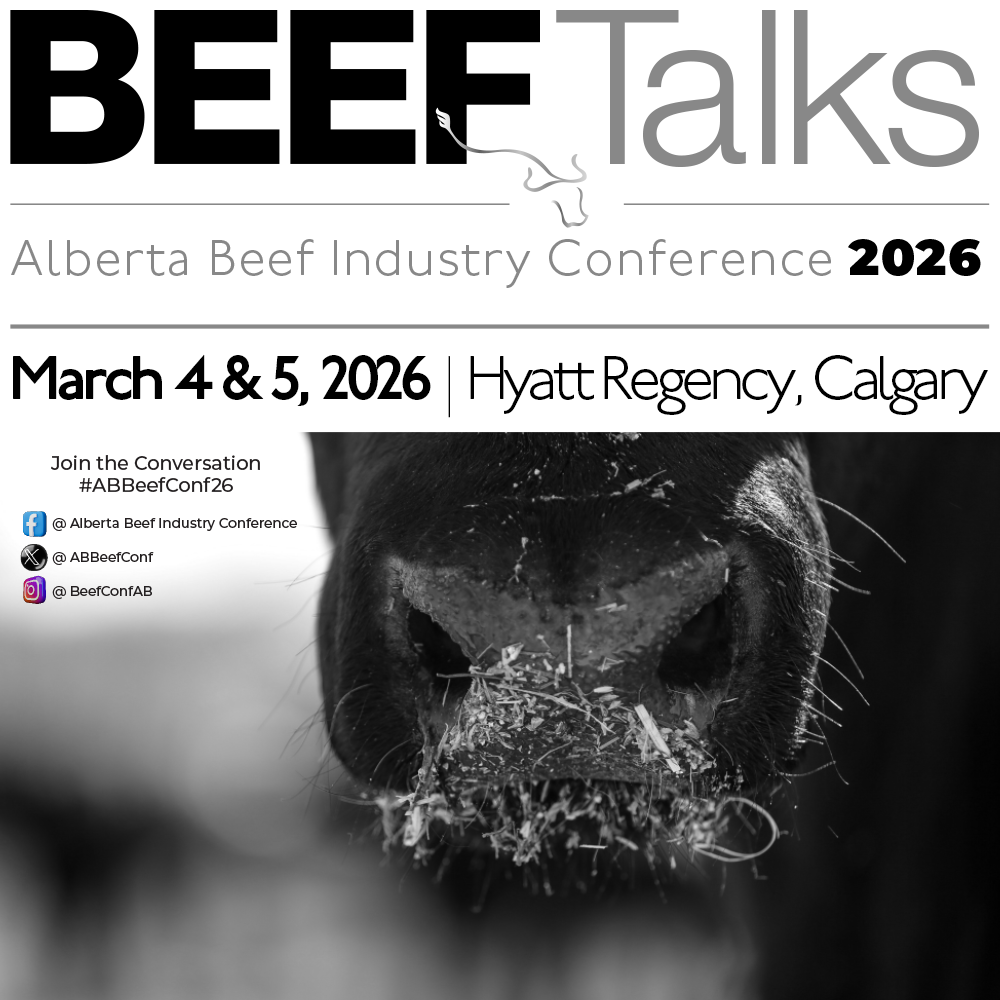AB Direct - Steers
Rail: 492.00-493.50 FOB feedlot (last week)
AB Direct - Heifers
Rail: 492.00-493.50 FOB feedlot (last week)
US Trade- Steers
Rail: 355.00-363.00 (IA, NE) last week
US Trade - Heifers
Rail: 355.00-363.00 (IA, NE) last week
Canadian Dollar
0.19
CBIC speakers offer insight into grain and cattle markets
Overwhelmed with the buy/sell/hold decision for feed? Wondering what you can do to support your bottom line when you sell animals at the same time every year? Market analysts suggest honing in on the factors you can control, and identifying options to mitigate against risk.
COVID-19, drought, and international turmoil took centre stage in market discussions at the Canadian Beef Industry Conference in Penticton, B.C. this summer.
Attendees heard from both Brenna Grant, Executive Director of Canfax and Canfax Research Services, and Brennan Turner, independent grain market analyst, and Founder of FarmLead/Combyne Ag.
And for those who didn’t attend (or anyone who wants to hear more), both Grant and Turner joined ABP’s Debra Murphy on The Bovine podcast.
Brenna Grant on the cattle markets
For the livestock markets, supply and demand shocks started in March 2020, says Grant, with COVID-19-induced shifts from food service to retail outlets.
The industry then dealt with plant closures, supply chain disruptions, shifts in prioritization, a “yo-yo of food services,” drought, and worries about recession.
But overall, Grant is seeing some positivity in the market. And while drought-induced placements were occurring from last summer to this one, the rain in June was critical. She says since then we’ve seen improvements in feed availability, as well as reduced feed costs.
“We’re seeing those available supplies in terms of cattle-on-feed numbers drop now to below year-ago levels for the first time in 13 months,” says Grant. “So things are starting to tighten up, starting to look more positive going into the fall.”
Grant says we could also see a counter-seasonal rally going into the fall run, versus the normal seasonal decline.
“We’re already seeing those tighter supplies and strong international demand driving fed cattle prices up throughout the first half of this year. And according to the futures market, they should continue to strengthen through into 2023.”
For cattle producers who sell in line with their production cycle and can’t dramatically alter the timing of sales, Grant suggests identifying and mitigating against risk factors like feed instead.
“Watching and finding out about feed markets…is absolutely critical for a feedlot in terms of following those markets, making sure you have supplies, and looking at alternative feeds in terms of what is the least-cost ration.”
Barley, corn, and wheat with Brennan Turner
When it comes to those feed and grain markets, there’s a lot of volatility, says Brennan Turner.
“What’s going on in the U.S. in terms of some of the crop production challenges there, obviously the Black Sea being a major asterisk in everything these days, between Ukraine and Russia and the invasion, and then last but not least is some of the recession and inflation challenges that we might be facing.”
Turner says there are timelines to think about when buying or selling.
“In terms of buying feed barley, there’s some great opportunities in the early winter months — that November to December timeframe. Thereafter it becomes very volatile, as barley starts to follow some of that corn price action.”
With all the factors that affect markets, it can be easy to get overwhelmed when trying to figure out ideal times to market commodities. While analysts like Turner keep a close eye on all of these factors, he suggests farmers and ranchers don’t get bogged down in the details.
“This comes down to controlling what you can control.”
Understand your cost of production, he suggests, and some of the best times to go to market.
Want to learn more? Hear the full conversations with Brenna Grant, Brennan Tuner, and host Debra Murphy on ABP’s podcast, The Bovine:
- An overview of the markets with Brenna Grant, Canfax
- Barley, corn, and wheat markets with Brennan Turner
These conversations were recorded at the Canadian Beef Industry Conference in Penticton, British Columbia. Subscribe to The Bovine on your favourite podcast app, and stay tuned for more from the conference!

